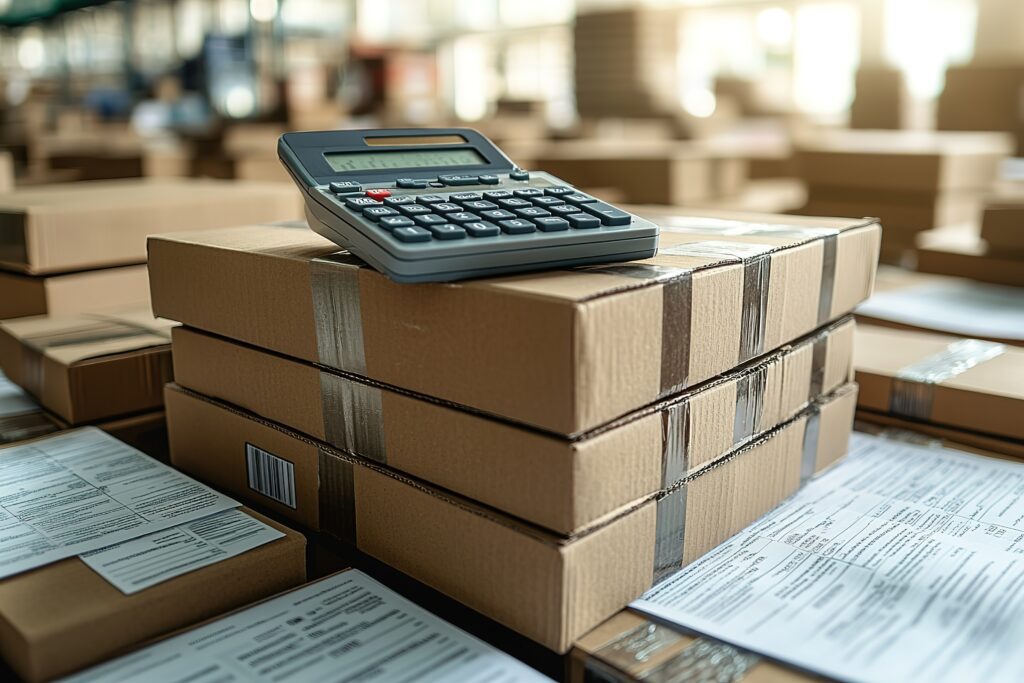This blog was first published in April 2024 and has been updated for accuracy on April 28, 2025.
Calculating retail return rates might seem straightforward: simply total the number of returns and divide by net sales. However, this basic formula overlooks key factors like exchanges, refunds, restocking fees, employee labor, and potential product damage.
To truly understand return rates and their financial impact, retailers need a more comprehensive approach that goes beyond standard reporting.
The surge in returns comes with increased fraud risks
Retail returns surged to $685 billion in 2024 (13.21% of total sales), and while flexible return policies improve customer satisfaction, they also contribute to rising fraud, with $103 billion lost to fraud. Accurately calculating return rates requires more than basic formulas, and retailers that rely on antiquated reporting methods won’t see the full picture, including how fraud is impacting their returns.
Top reasons for customer returns:
A 2023 retail returns survey by Dealnews found that a retailer’s return policy plays a key role in customer loyalty, with many shoppers considering it when deciding whether to continue shopping with a brand. Here’s how they ranked their top reasons for returning items:
- Didn’t fit: 65%
- Item damaged or defective: 56%
- Didn’t like it: 44%
- Item didn’t match description: 31%
- Found a better price elsewhere: 13%
- No longer needed the item: 12%
- Buyer’s remorse: 11%
- Ordered the wrong item: 11%

Factors that influence retail return rates
Assessing these key questions helps optimize returns, reduce return rates, and improve profitability by creating a more seamless, fraud-resistant, and customer-focused process. Consider these key questions to assess and improve your store’s return process:
1. Return policies & customer experience
- Are your return policies seamless or creating friction for loyal customers?
- Do policies differ by channel (in-store vs. online)?
- Do you offer Buy-Online-Return-In-Store (BORIS), and how does the process compare to in-store purchases?
2. Fraud prevention & return oversight
- Do your current practices effectively deter fraud without frustrating legitimate customers?
- What actions and overrides occur during the return process?
- Do you validate receipts at the point of return?
3. Employee & customer insights
- How do associates feel about handling returns?
- How is the consumer return experience perceived by shoppers?
4. Loyalty & customer retention
- Do you track return behavior to differentiate between good and fraudulent customers?
- Are loyal customers recognized or rewarded within your return policy?
- Do returns factor into programs that help “average customers” become “best customers?”
The old return rate calculation
Calculating return rates may seem simple, but many ecommerce, POS, and retail ERP systems oversimplify the formula. Typically, they calculate return rates by adding up all return transactions and dividing that total by net sales. However, this method only accounts for pure returns (transactions where items are simply returned, without exchanges or refunds).
While each return transaction can contribute to a positive consumer experience, it also comes with added costs and revenue loss. For example, exchanges involve restocking fees, employee time, and potential damage to goods.
The traditional method excludes exchanges from the return rate calculation, assuming they have no impact on the business since no money changes hands. But this overlooks the real operational costs tied to exchanges.
Retailers need a more comprehensive formula that accounts for the operational costs tied to both returns and exchanges.
The “real return rate” calculation includes not only pure returns, but also the value of exchanges (positive, negative, or neutral), offering a clearer picture of how returns impact a retailer’s bottom line.

The real return rate considers four types of retail returns
Having a more accurate way of measuring return rates leads to better decision-making, ultimately improving store performance and generating net sales. A more robust method for calculating the “real return rate” includes both pure returns and exchanges, accounting for each type of retail return:
- Pure return: A traditional return where the shopper returns an item and receives a refund, with no exchanges or additional purchases.
- Even exchange: A balanced transaction where returned items and new purchases equal the same value, resulting in no net change.
- Negative exchange: A return where the shopper receives a refund and buys a less expensive item, resulting in money being returned to the consumer.
- Positive exchange: A return where the shopper gets a refund and makes additional purchases, increasing revenue for the retailer.
Including all types of returns provides a clearer view of their impact on a retailer’s business, even if it results in a higher return rate. While this approach may show a significant increase in return rates, it offers several benefits:
- Improved visibility into return trends
- Better insights into return fraud and abuse
- Deeper understanding of shopper behavior
Retailers are now viewing returns as merchandise flowing back into the store, just as they view sales as merchandise leaving the store. The metrics should reflect this difference, without obscuring the impact of exchanges or returns, giving retailers a chance to engage and influence future sales.
How to calculate the return rate for brick-and-mortar stores
B&M return rate = (return dollars for B&M purchases) ÷ (B&M dollar sales)
NOTE: Some return rates are calculated based on transactions rather than dollars. However, using dollars provides a clearer picture of the financial impact, as it directly affects the bottom line. Transaction-based calculations can overlook high-dollar returns, treating them the same as smaller ones. When assessing fraud and abuse, focusing on dollars helps identify the greatest risks.
How to calculate the return rate for ecommerce and BORIS
Ecommerce return rate (BORO) = ($$ for online returns) ÷ (ecommerce sales)
Ecommerce return rate (BORO) = ($$ for online returns) ÷ (ecommerce sales)
BORIS (buy-online-return-in-store) = $$ returns for ecommerce purchases ÷ (ecommerce sales)
Overall ecommerce return rate = BORO rate + BORIS rate = ($$ online returns for online purchases + $$ instore returns for instore purchases) ÷ ecommerce sales
NOTE: Because BORO (ecommerce return rate) and BORIS return rates both have an ecommerce sales denominator (online sales only), they can be added together.
How to calculate your claims rate
Claims $$ / online sales
Understanding exchanges in return rate calculations
When analyzing return and claims rates, exchanges can sometimes create confusion. A common question arises: If an exchange results in a net $0 transaction, should it be considered a return? The answer is yes—return and claims dollars should always be included, rather than just looking at the net amount.
The impact of exchanges on retail return rates
Consider this scenario: A customer buys a pair of running shoes for $150 and later exchanges them for a different size. The following week, they exchange them again for a different color. A few days later, they exchange the new pair for yet another color. This cycle continues, and the customer exchanges the shoes 10 times—each time with a net transaction of $0.
At first glance, it might seem like these exchanges have no impact on net sales. However, from a returns perspective, the cumulative return value is $1,500 ($150 × 10 exchanges).
Why this matters for return abuse
If only net sales were considered, this scenario would appear to have no impact ($0). But in reality, each return comes with costs—processing, restocking, and potential loss of resale value. Which number better represents the risk of return abuse: $0 or $1,500?
Clearly, the $1,500 figure more accurately reflects the financial risk. This is why it’s critical to track return dollars rather than just net transactions when analyzing return rates and claims.
“The key to creating a good statistic is the denominator. Once you get that right, it’s hard to get the statistic wrong.” – Dean Abbott, Chief Data Scientist, Appriss Retail
What does a high return rate mean?
A high return rate can indicate customer dissatisfaction, often due to:
- Inaccurate product descriptions
- Inconsistent sizing
- Poor product quality or materials
- Damage during shipping
Each return is an opportunity to either retain or lose a customer.
A smooth return process helps maintain customer loyalty, while a poor experience can drive customers away. Monitoring return rates helps identify trends, resolve underlying issues, and ensure actions taken to improve returns are effective.
Real-time protection for returns, claims, and appeasements
Accurately calculating return rates is crucial for understanding business performance and addressing potential issues, but tracking returns alone isn’t enough. Retailers need a comprehensive approach to prevent fraud while delivering a great customer experience.
Appriss® Engage helps retailers reduce return and claims fraud, while improving customer satisfaction, cutting returns by 8-12% on average. It streamlines the process by linking purchases, returns, orders, claims, credit card data, and more, offering a clear view of shopper behavior. By automating this process, Engage does the hard work for you—so you can focus on serving your customers and growing your business. Ready to get started? Schedule your discovery call today to connect with a solutions expert.





